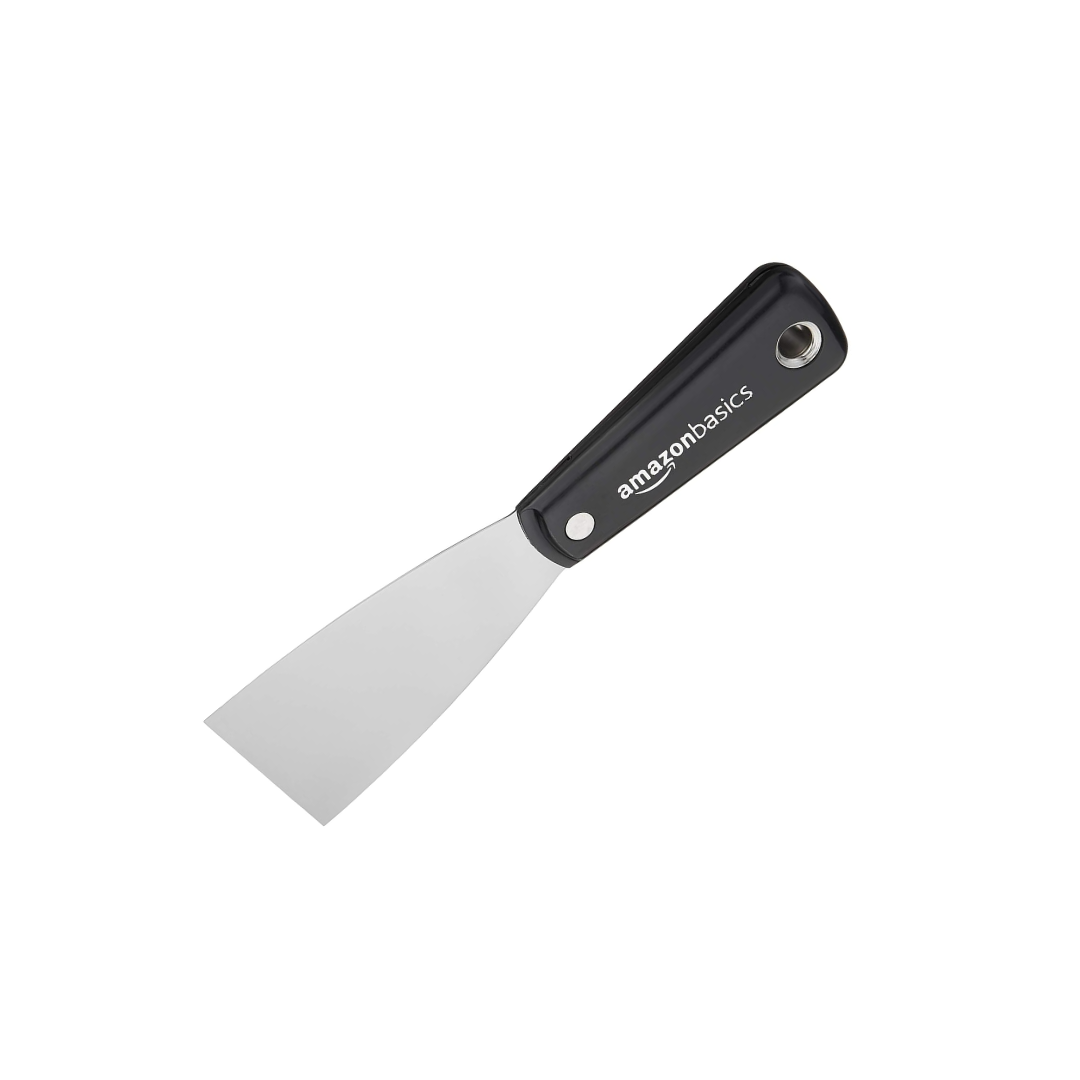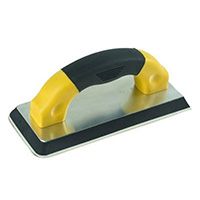We may be compensated if you purchase through links on our website. Our team is committed to delivering honest, objective, and independent reviews on home products and services.
Stucco, a cement- or lime-based plaster, is renowned for its durability and longevity when properly installed. With the potential to last a century or more, it’s an excellent choice for homeowners seeking a low-maintenance exterior finish. However, even the most resilient materials can succumb to damage over time. When cracks, blisters, or other issues appear in your stucco, addressing them right away can prevent further damage.
This guide will walk you through the process of repairing stucco, ensuring your home’s exterior remains protected and looking its best. Antonio DiSilva of MJM Masonry performed the remedial work on the East Boston house over ten days, ripping off loose material and patching it with three separate coats.
Tools and Materials for Stucco Repair
When undertaking a stucco repair project, you’ll first need to make sure you have the right tools and materials on hand. Here’s a comprehensive list of what you’ll need:
- Drywall hawk
- Drywall knife (4-inch)
- Flat trowel
- Galvanized metal lath
- Gloves
- Grade-D builder’s paper
- Hammer
- Hydrated lime
- Portland cement
- Rubber grout float
- Safety goggles
- Shovel
- Snips with offset handles
- Spray bottle for misting
- Utility knife
- Water bucket
- Wheelbarrow
- Wire brush
Stucco Recipes
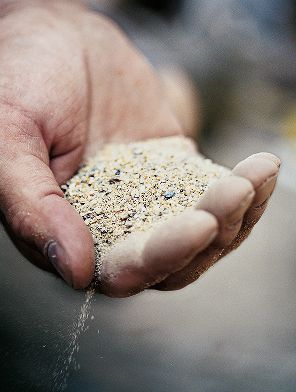
Different layers of stucco require slightly different recipes to ensure optimal adhesion and durability. Here are the recipes for the three coats you’ll need:
First coat:
- 1⁄2 bag (47 lbs.) Portland cement
- Six shovels brick or mason’s sand, slightly damp
- One shovel hydrated lime
- 1⁄2 cup acrylic bonding agent
Second and finish coats:
- 1⁄2 bag (47 lbs.) portland cement
- Eight shovels aggregate sand for concrete
- One shovel hydrated lime
- 1⁄2 cup acrylic bonding agent
Directions for Preparing the Stucco
- Shovel the dry ingredients into a wheelbarrow and blend them with a mortar hoe.
- Add the acrylic bonding agent, then stir in water, a little at a time, until the mix reaches the consistency of buttercream frosting.
- Be cautious not to add too much water, as this will make the mix loose and unworkable.
- Once water is added, the mix will stay usable for 30 to 90 minutes before it starts to harden.
Watch the Weather
Weather conditions play a crucial role in the success of your stucco repair. Freezing temperatures can ruin wet stucco, so it’s best to wait for nighttime temperatures to stay above 40 degrees Fahrenheit before starting your project. Similarly, hot, dry, and windy weather can interfere by drawing out moisture too quickly, preventing proper curing. Work in shaded areas when possible, and keep the patch moist between coats by covering it with a plastic sheet.
Work Safely
The alkalis in wet cement can cause skin burns, so it’s essential to wear protective gloves and avoid direct contact with the mixture when working with stucco. Use your tools to handle the stucco, and keep a bucket of clean water nearby to quickly wash off any splashes that may occur.
Apply Pigmented Coating
After completing the repair, you’ll likely notice that the patched area doesn’t match the color of the surrounding stucco. To achieve a seamless look, you’ll need to apply a pigmented coating over the entire surface. Options include:
- Thick, sprayed-on acrylic elastomers that bridge and seal hairline cracks
- Concrete paints and stains
- Lime washes
- Mineral paints
- “Fog coats” of pigmented cement
Whichever coating you choose, ensure it’s alkaline tolerant and permeable to water vapor to prevent future peeling and damage.
Steps for Repairing Stucco
Here are the steps you should take to properly repair broken stucco:
Step 1: Break Off Loose Stucco
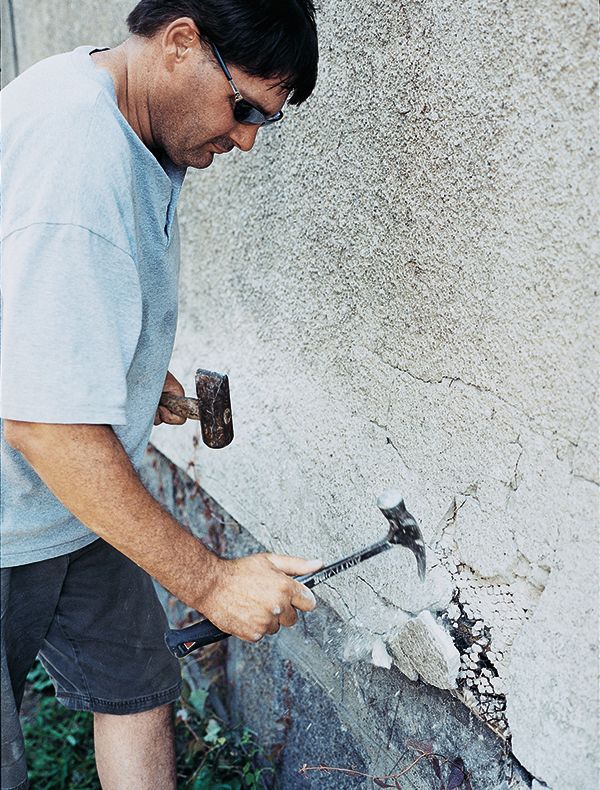
Begin by removing any loose or damaged stucco. Use a hammer or a combination of a hammer and cold chisel to carefully break away the compromised areas. Take care not to damage the underlying wood lath supports during this process. Always wear eye protection to guard against flying debris.
Step 2: Chip Away At The Edges
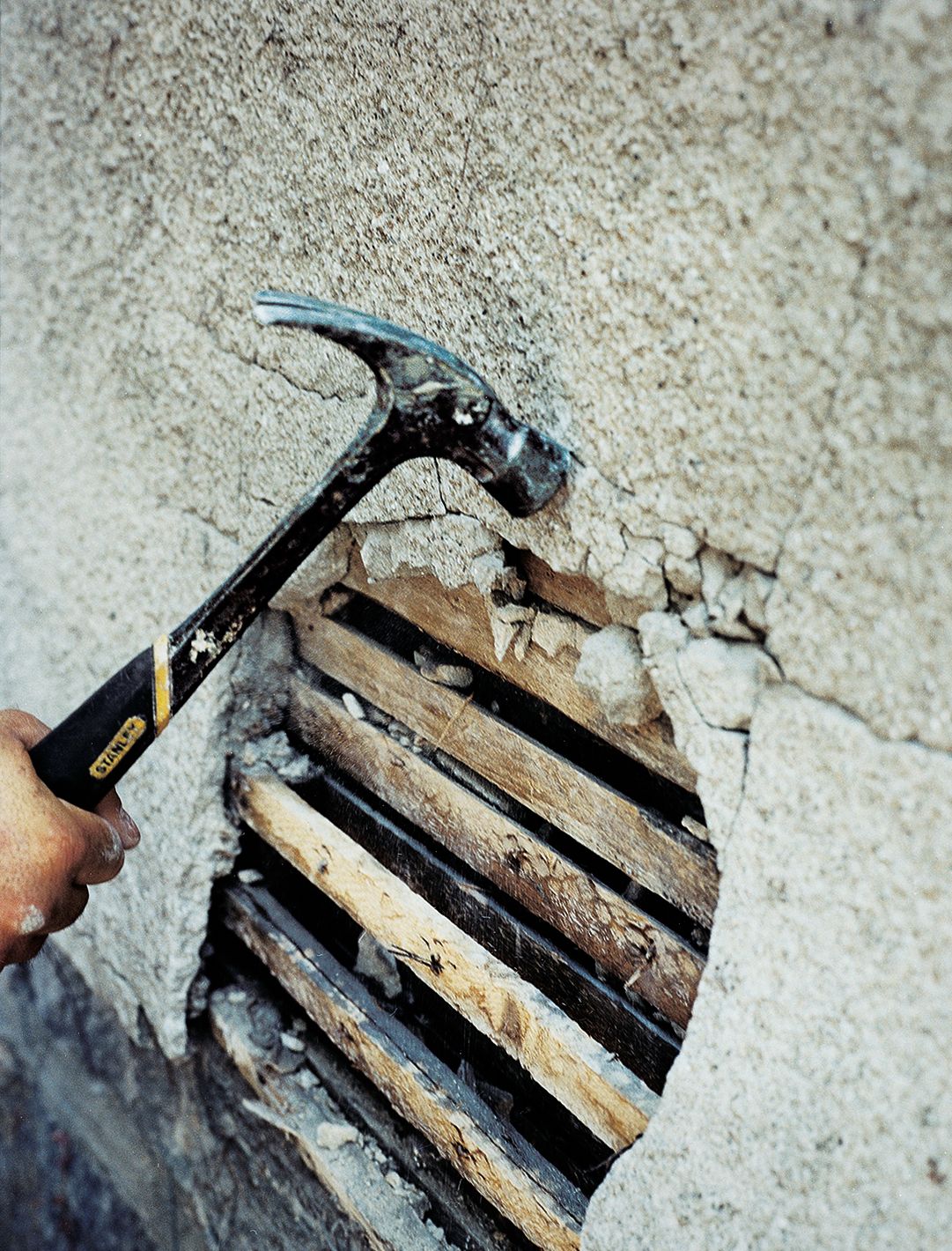
Continue chipping away at the edges of the damaged area until you reach firmly adhered stucco. This step ensures a strong bond between the existing stucco and your repair. If you encounter any metal mesh, use snips to cut it away cleanly.
Step 3: Cover The Exposed Lath
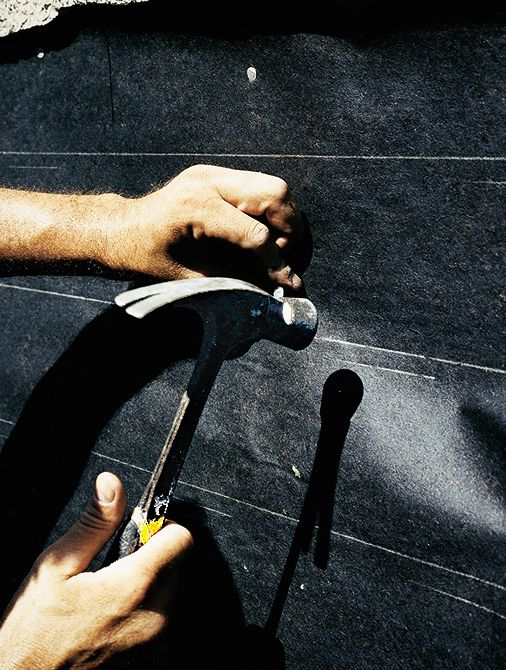
To prepare the exposed area for new stucco, cover the wood lath with grade-D builder’s paper. Cut the paper to fit snugly along the boundary where the old stucco meets the exposed lath. It’s important to make sure that the paper is well-secured to prevent moisture infiltration. Secure the paper using roofing nails, then add a second layer on top for extra protection against moisture.
Step 4: Add Mesh
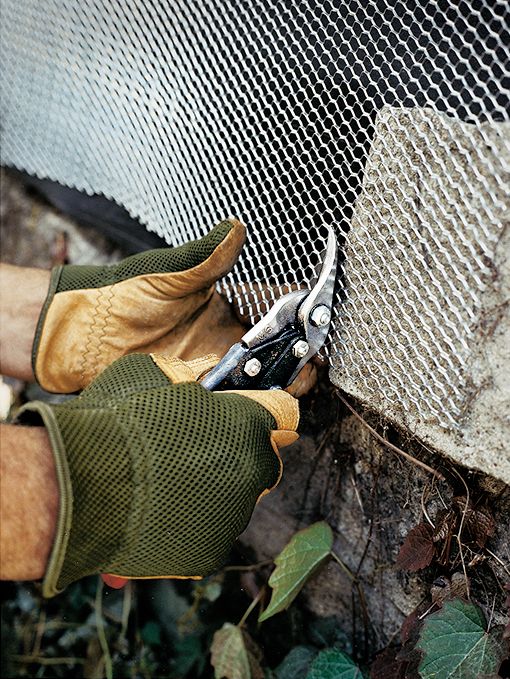
Place galvanized metal lath over the builder’s paper, trimming it to fit tightly against the edge of the existing stucco. Use snips with offset handles for easier cutting. Secure the mesh by driving roofing nails through it and into the wood lath beneath.
Step 5: Mix the Stucco
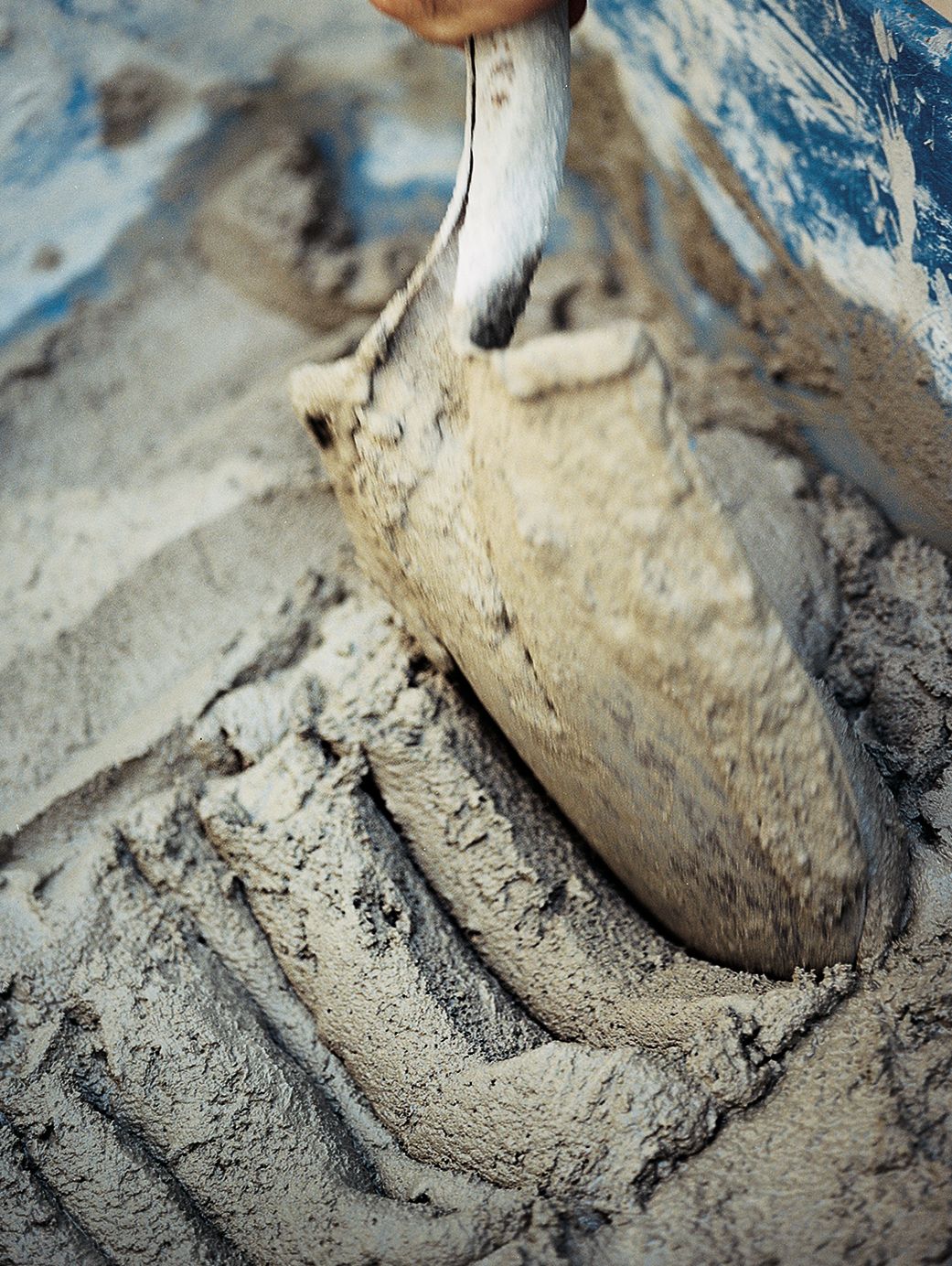
Following the first-coat recipe provided earlier, prepare your stucco mix in a wheelbarrow. The acrylic bonding agent included in the recipe improves adhesion between the new and old stucco, ensuring a lasting repair. Make sure to mix the stucco thoroughly to achieve a uniform consistency.
Step 6: Sling the Stucco
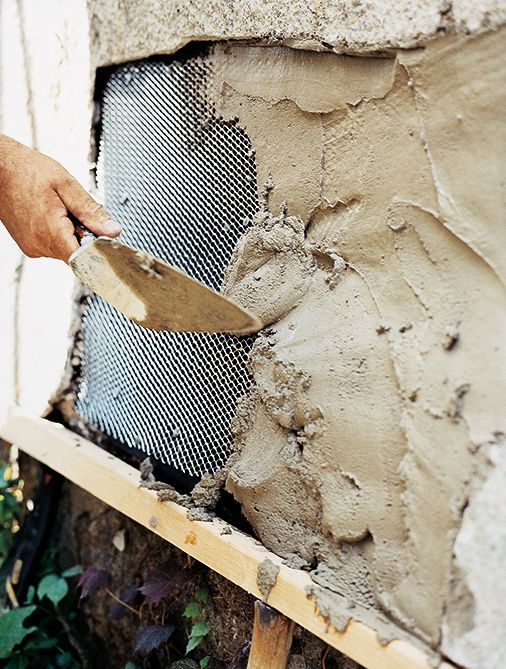
Before applying the new stucco, wet the edge of the old stucco to prevent it from drawing moisture out of the fresh mix. This step helps maintain a strong bond between the old and new materials. Apply the stucco mix by scooping fist-sized wads onto a brick trowel and tossing them against the wire lath until it’s completely covered. Use a finishing trowel to smooth the surface, then pack it against the existing stucco’s edge with a brick trowel. Continue adding material until this layer is approximately 1/2 inch below the existing stucco surface.
Step 7: Scratch the Stucco
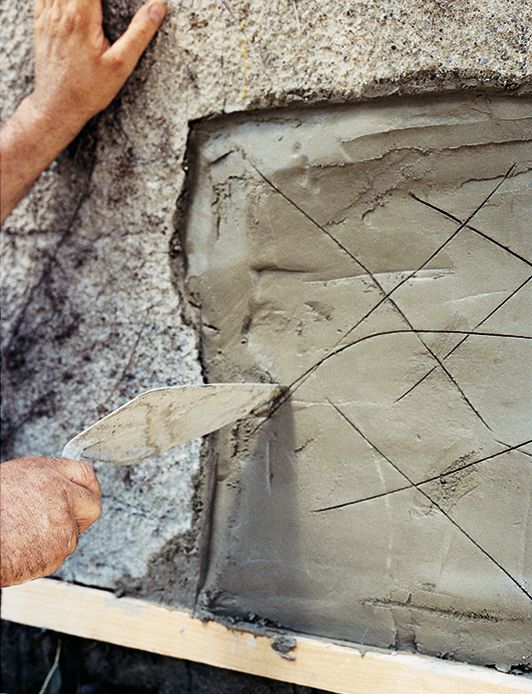
Once the newly applied stucco loses its wet sheen, score its surface to create a better bonding surface for the next coat. This step, known as “scratching,” helps ensure strong adhesion between layers. After scratching, cover the patch with a plastic sheet to maintain proper moisture levels during curing. Keeping the patch covered prevents the stucco from drying too quickly, which can lead to cracks.
Step 8: Apply the Second Coat
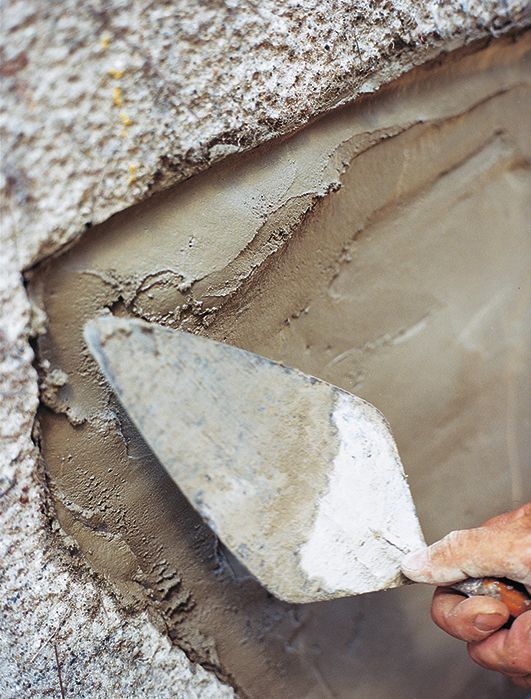
After allowing the first coat to cure for seven days, remove the plastic covering and mist the patch with water. This helps to keep the stucco hydrated, improving the bonding process. Prepare a batch of stucco using the second-coat recipe, then apply a 3/8-inch-thick layer, working from the bottom up. Use a brick trowel to pack down the edges, ensuring a seamless transition to the existing stucco. Once the wet sheen disappears, smooth the surface with a trowel, keeping it just below the level of the surrounding stucco. Cover the patch again with a plastic sheet to control moisture during curing.
Step 9: Put On the Finish Coat
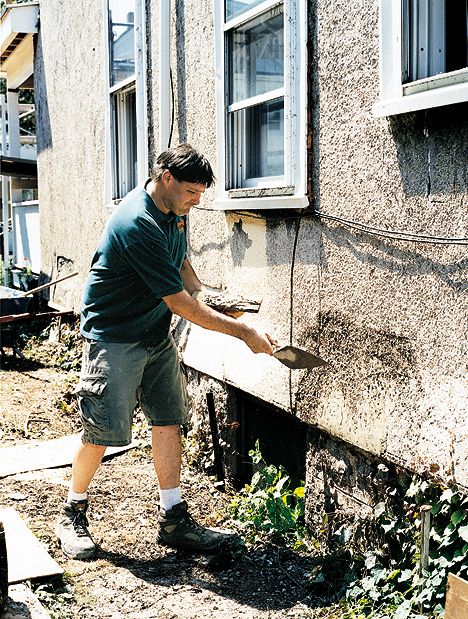
Three days after applying the second coat, remove the plastic cover and mist the patch once more. Mix a fresh batch of stucco using the finish-coat recipe. The application technique for this final layer will depend on the desired texture. To match a “dash” finish, for example, scoop small amounts of wet mix onto a brick trowel and flick them against the wall until they’re flush with the old surface.
Step 10: Wait To Paint
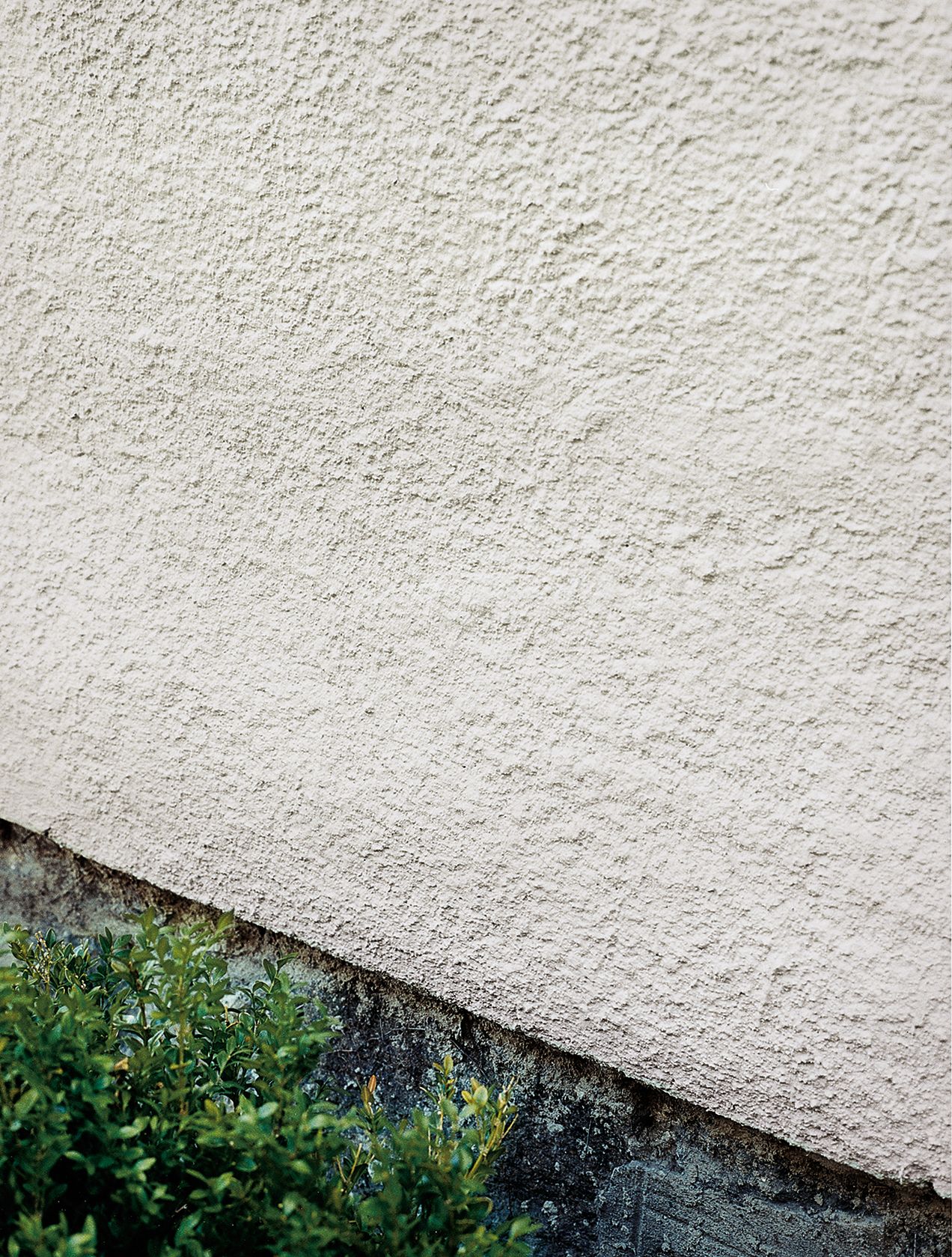
Allow the repaired area to cure for at least a week before painting to allow the stucco to achieve its full strength and for any excess moisture to evaporate. Once cured, apply a coat of heavy-bodied acrylic elastomer or another suitable coating to blend the repair with the surrounding wall.

